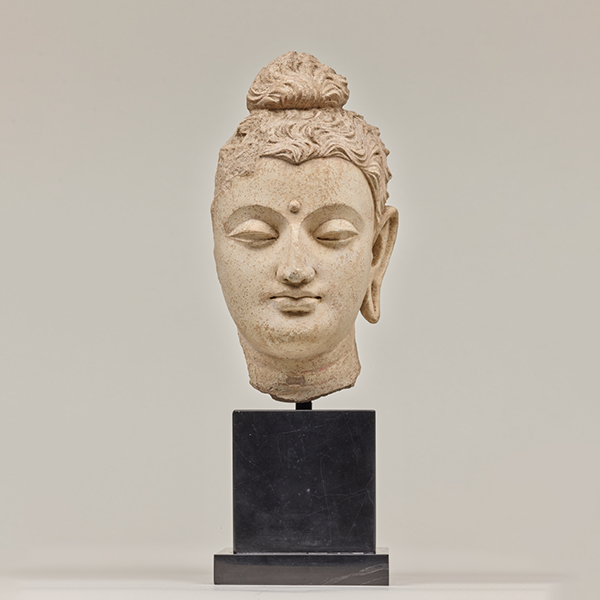Sculptures from India and Gandhara
-

Head of a Buddha
Hadda, Afghanistan, 3rd–5th centuryAsian Gallery (Toyokan) Room 3
July 1, 2025 (Tue) - December 21, 2025 (Sun)This gallery introduces Buddhist and Hindu sculptures from India and Gandhara. Buddhist art flourished in northern India during the Kushan dynasty (1st–3rd century). The production of Buddhist statues began in Gandhara (northwestern Pakistan) and Mathura (northern and central India) around the 1st century, with a particular emphasis on sculptures depicting the life of Gautama Buddha in Gandhara.
| Designation | Name | Creation/ Excavation/ Provenance |
Period | Acquisition/ Ownership/ Accession Number |
CMT | ||
| Buddha | Gandhara, Pakistan | Kushan dynasty, 2nd–3rd century | TC-80 | ||||
| Highlight | Pillar Ornament | Amaravati, India | Satavahana dynasty, 1st–3rd century | TC-729 | |||
| Buddha and Worshippers | Kushan dynasty, 2nd–3rd century | Gift of Mr. Yamanaka Sadajirō, TC-83 | |||||
| The Birth of the Buddha; Bathing of the Buddha | Gandhara, Pakistan | Kushan dynasty, 2nd–3rd century | TC-653-2 | ||||
| Highlight | Head of a Buddha | Hadda, Afghanistan | 3rd–5th century | TC-411 | |||
| Highlight | Fragment of Relief Sculpture: Yakṣiṇī | Pakistan | Kushan dynasty, 2nd–3rd century | Gift of Mr. Katō Hiroshi, TC-583 | |||
| Highlight | The Buddha Śākyamuni with the Eight Great Bodhisattvas | India | Pala dynasty, 9th century | Gift of Mr. Kunizuka Kazunori, TC-462 |
